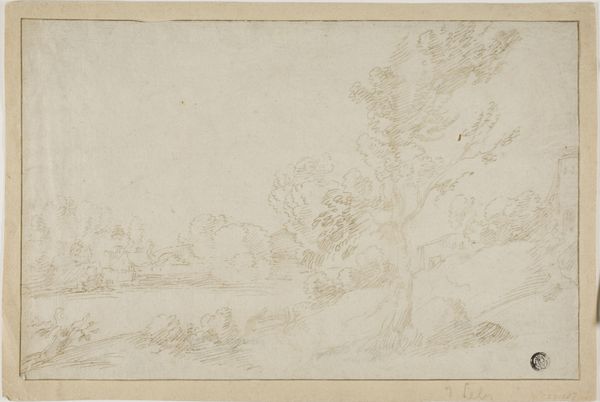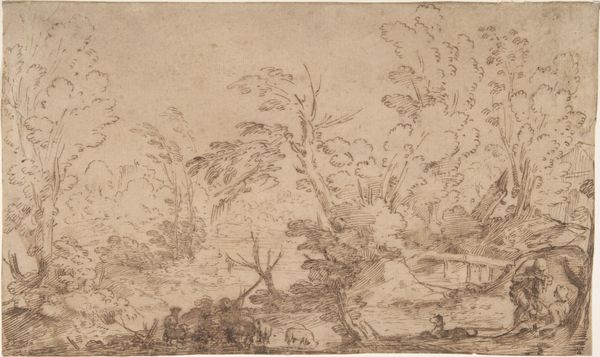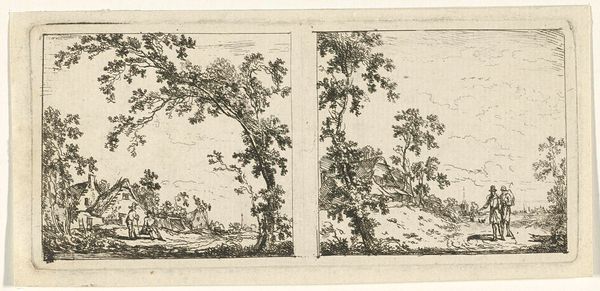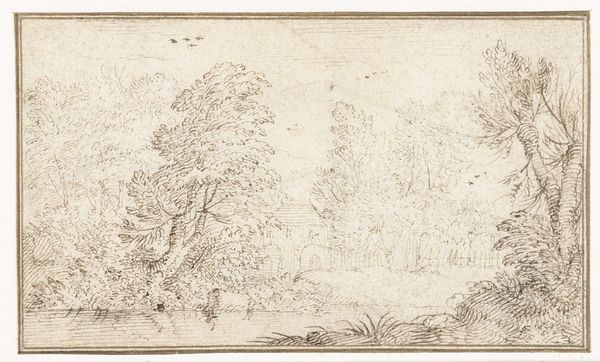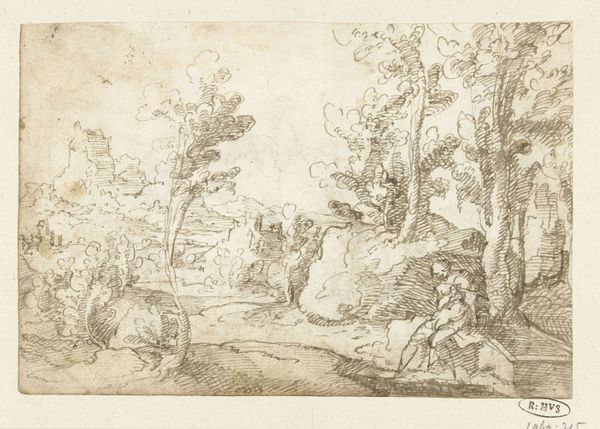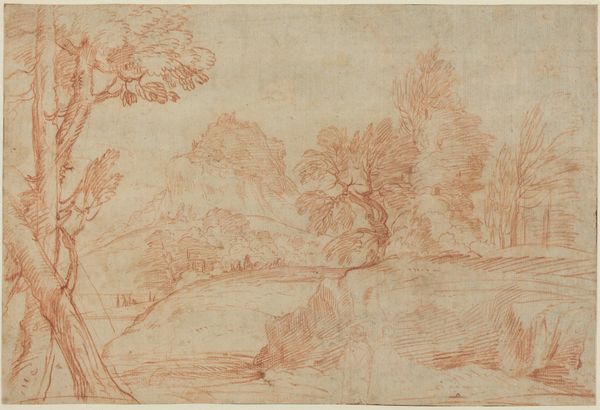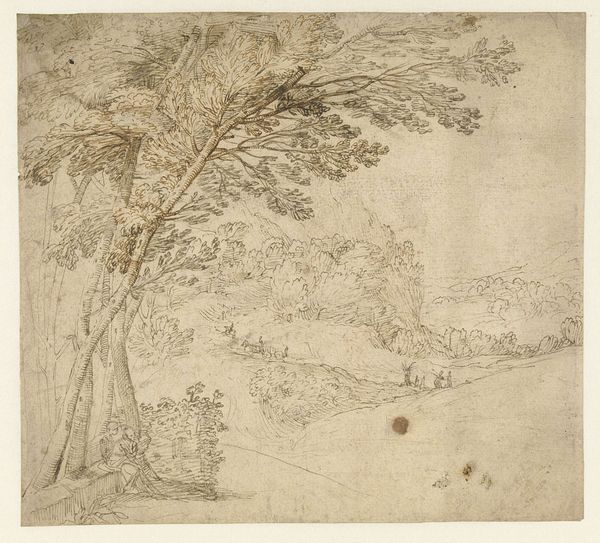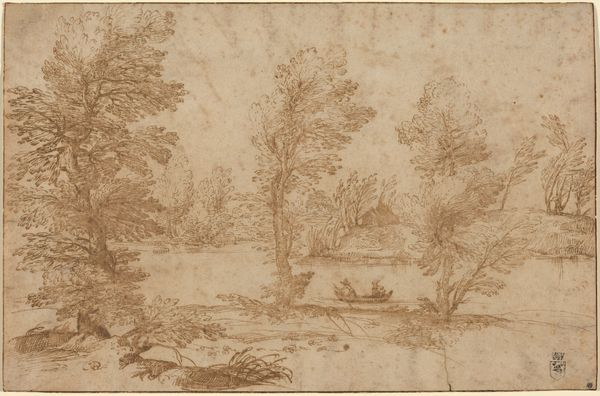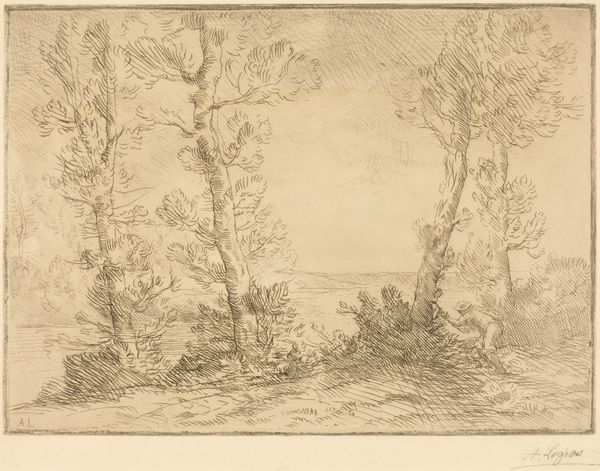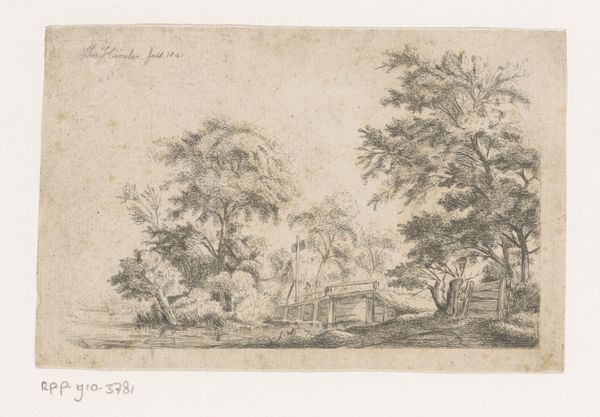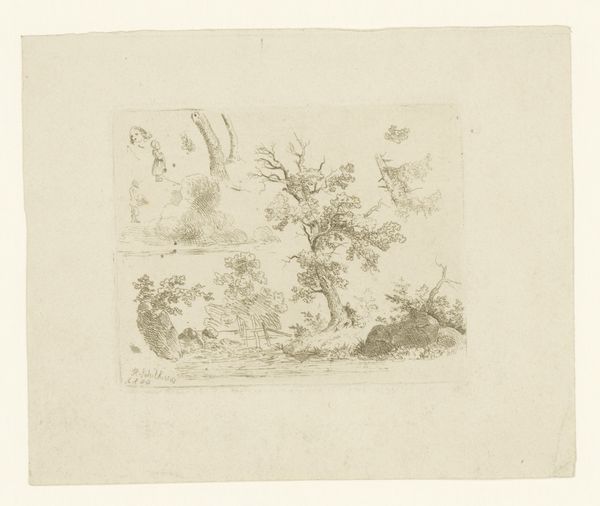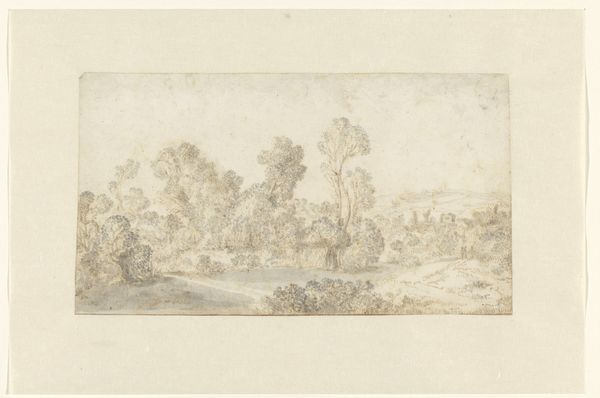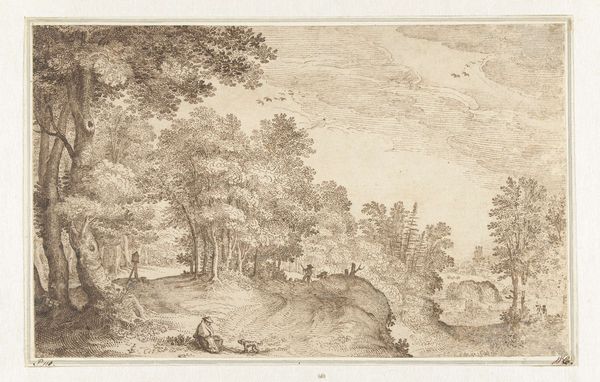
drawing, print, etching
#
drawing
# print
#
etching
#
pencil sketch
#
landscape
#
etching
#
romanticism
Dimensions: height 76 mm, width 98 mm
Copyright: Rijks Museum: Open Domain
Curator: Let's examine this work by Jan Baptiste de Jonghe, titled "Landschap en figuurstudies," created sometime between 1800 and 1844. It combines drawing, etching, and printmaking techniques. You can currently view this in the Rijksmuseum. Editor: My first impression is quiet and contemplative. It’s a very delicate piece; almost ephemeral. Curator: The visible etched lines speak volumes about the labor involved. Consider the artist’s hand meticulously scoring the plate to produce these wispy, delicate lines that give the impression of an almost dreamlike landscape. It reminds us of the rise of printmaking as a democratic art form, where images could be disseminated widely. Editor: Yes, and landscape prints like this became hugely popular. They allowed a growing middle class to own "picturesque" views, democratizing access to art and experiences of nature that previously may have only been accessible to aristocracy. The picturesque aesthetic influenced not just art, but also garden design, and ideas about rural life. Curator: It really speaks to Romanticism, the way de Jonghe intertwines figure and landscape. The figures in the background feel dwarfed by the immensity of the landscape, becoming just another material element. It almost strips away the idealized figure found in earlier Neoclassical work. Editor: Do you think this emphasis on a somewhat unpopulated landscape had any impact on cultural perceptions of property and land usage at that time? I'm always fascinated by how seemingly innocuous imagery played a role in legitimizing specific socio-political agendas. Curator: Absolutely, thinking about it through a materialist lens, the creation and distribution of such idyllic scenes implicitly glossed over the realities of agricultural labor, class division, and evolving property relations in the period. Editor: Considering the relatively fragile nature of prints and drawings like this, I always find it fascinating that these kinds of art pieces manage to remain in good shape and stored in such high regard at locations like the Rijksmuseum to inform us about our past. Curator: Precisely, it shows how artworks gain layers of social and institutional meaning over time, becoming objects that reflect and refract cultural and economic shifts in society. Editor: Definitely an eye-opener when considering its value in historical contexts.
Comments
No comments
Be the first to comment and join the conversation on the ultimate creative platform.
